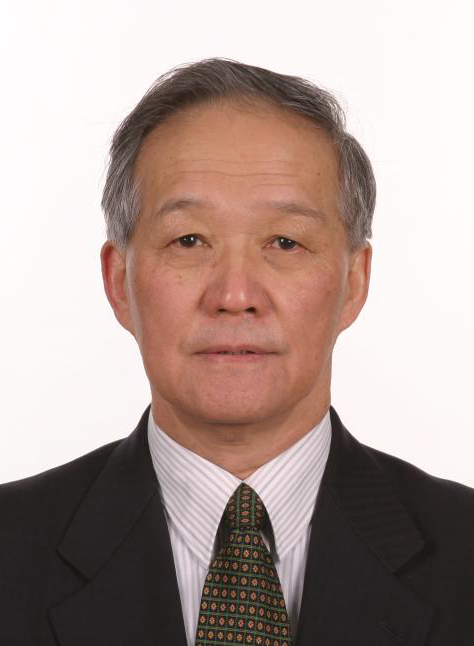
Plenary Lectures
![]()




Prof. George S. Dulikravich
Department of mechanical and materials engineering, Florida International University, USA
Lecture Title: Interaction of inverse problems, design and optimization
Abstract: Analysis (or direct) problems are mathematically defined and numerically solvable if the following information is provided: 1) shape and size of domain, 2) boundary and initial conditions, 3) sources/sinks spatial and temporal distribution, 4) physical properties of the media in the domain, and 5) governing equation(s). Inverse (or reverse) problems are mathematically defined as de facto analysis problems when one or more of these five pieces of information are not available. Inverse problems are numerically solvable if sufficient pertinent additional information is provided. Design is generally understood as a set of methods used to achieve new creative solutions that uses either the subjective experience of the designer or maximizes certain desired features of the solution. Inverse design involves finding values of the design variables that will create a product with specific desired features. For example, determine the shape of a wing that will have a specified desired pressure distribution on its surface. That is, determine geometric parameters that will create the shape of a wing and its airfoils that will produce this specified surface pressure distribution. Design optimization involves finding values of the design variables that will create a product with either one (single-objective) or simultaneously many (multi-objective) features that are either maximized or minimized, subject to user-specified constraints. For example, find a set of geometric parameters defining an airplane wing shape that will have minimum drag, while maintaining the specified values of lift and wing interior volume for fuel tanks. Optimization requires a very large number of analysis results of mathematical system where design variables are randomly perturbed within specified ranges of magnitudes. Since numerical methods for obtaining high accuracy (high fidelity) analysis results are the most time consuming step in the overall design process, orders of magnitude faster approximate methods (metamodels) for performing analyses having acceptably lower accuracy are required. For example, using a set of high fidelity analysis results, develop and use a multi-dimensional hypersurface (response surface) fitting these data, or, develop a fast input-output relation (artificial neural network, machine learning, reduced order modeling, etc.). Thus, links among analysis, inverse problems and design have been well established. However, direct interaction between inverse problems, design and optimization is still an open avenue for research. For example, when performing an iterative inverse shape design of an airplane wing, a relatively large number of incrementally updated wing shapes need to be aerodynamically analyzed using high fidelity analyses which is very costly. At the end of such an inverse design process, the resulting shape might not be manufacturable because of the designers specified desired surface pressure distribution. On the other hand, if a brute force design optimization of the wing shape is performed, it will still require a large amount of computing time to analyze aerodynamic features of a relatively large number of randomly created wing configurations in order to then create metamodels so that actual optimization can be performed efficiently. This suggests that inverse design should be combined with optimization in order to utilize the experience of the designer(s) in order to avoid analyzing numerous configurations that are obviously aerodynamically meaningless.
Prof. Gengdong Cheng
State Key Laboratory of Structural Analysis for Industrial Equipment,Dalian University of Technology, China
Lecture Title: Topology Optimization via Sequential Integer Programming and Discrete Sensitivity Analysis
Abstract: The mathematical essence of structural topology optimization is large-scale nonlinear integer programming. To overcome its huge computational burden, the popular way is to relax the 0-1 variable constraints and transform the integer programming to continuous variable programming. To cope with the variable transformation, the well-know SIMP (Solid Isotropic Material with Penalty) method introduces the interpolation schemes for the material properties versus design variables with penalty and achieves great success and popularity. However, there is no doubt that directly tackling the large-scale nonlinear integer programing is very important. This paper solves the structural topology optimization problems with single or multiple constraints by applying the Canonical Dual Theory together with Sequential Approximate Programming approach under the classic structural topology optimization formulations.
The present paper firstly present a new study on the discrete sensitivity analysis, with which the explicit and separable approximate Sequential Quadratic Integer Programming (SQIP) or Sequential Linear Integer Programming (SLIP) subproblems are constructed. And then, the subproblems are solved by applying the Canonical relaxation algorithm based on CDT theory. Their special mathematical structures are exploited to develop analytic solution of Khun-Tucker condition of the dual programming. Numerical experiments of two linear and quadratic integer programming problems with random coefficients show that the Canonical relaxation algorithm can get approximate solutions with good properties very efficiently and the dual gap is negligible when the number of design variables increases.
Two different move limit strategies within the new method are presented. The new method first solves a set of classic topology optimization problems with only material usage constraint, including minimum structural compliance design under constant load, maximum heat transfer efficiency for the heat conduction problem. And then we apply the method to the topology optimization problems with multiple constraints, including minimum structural compliance design under an additional local displacement constraint and minimum structural compliance design under infill constraints. The results of these problems demonstrate that the new method can efficiently solve the discrete variable structural topology optimization problems with multiple nonlinear constraints or many local linear constraints in a unified and systematic way and can get integer solutions when combined with the move limit strategy of controlling the volume fraction parameter. It can deal with much more design variables than the general branch and bound method.
Prof. Kalyanmoy Deb
Electrical and Computer Engineering, Michigan State University, USA
Lecture Title: Customized Optimization for Practical Problem solving
Abstract: Practitioners are often reluctant to use a formal optimization method for routine design and other practical applications, mainly due to the general perception of requiring a large computational time and ending up with a specialized and often "brittle" solution. Optimization methods have come a long way and are made flexible to handle various practicalities including reduction of solution time, handle large dimensions, search for robust and reliable solutions, and discover useful knowledge understanding intricacies of the problem. In this talk, we shall emphasize the importance of customized optimization algorithms in handling various practicalities. A few case studies from industries involving an extreme scale (billion-dimensional) problem and computationally expensive (consuming two days per evaluation) will be presented to demonstrate the usefulness of computational intelligence methods.
Prof. Jari Kaipio
Department of Mathematics, The University of Auckland, New Zealand
Lecture Title: Modelling of boundary uncertainties in inverse problems
Abstract: A large class of inverse problems are induced by partial differential equations and the related initial-boundary value problems. In many cases, the exact shape of the domains is only approximately known[1]. Furthermore, domain truncation is also often carried out for computational reasons. On these truncation boundaries, the boundary conditions are unknown [2,3]. In this talk, we consider the modelling of such boundary uncertainties [4].
[1] A Nissinen, V Kolehmainen, JP Kaipio. Compensation ofmodelling errors due to unknown domain boundary in electricalimpedance tomography. IEEE Transactions on Medical Imaging, 2011, 30: 231-242.
[2] D Calvetti, PJ Hadwin, JMJ Huttunen, D Isaacson, JP Kaipio, D McGivney, E Somersalo, J Volzer. Artificial boundary conditionsand domain truncation in electrical impedance tomography, Part I: Theory and preliminary results. Inverse Problem Imaging, 2015, 9: 749-766.
[3] D Calvetti, PJ Hadwin, JMJ Huttunen, JP Kaipio, E Somersalo. Artificial boundary conditions and domain truncation inelectrical impedance tomography. Part II: Computational results. Inverse Problem Imaging, 2015, 9: 767-789, .
[4] JP Kaipio, V Kolehmainen. Approximate marginalization overmodeling errors and uncertainties in inverse problems. Bayesian Theory and Applications, Oxford University Press, 2013.